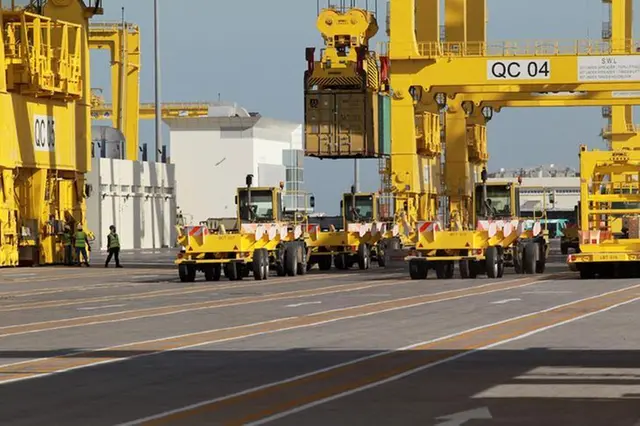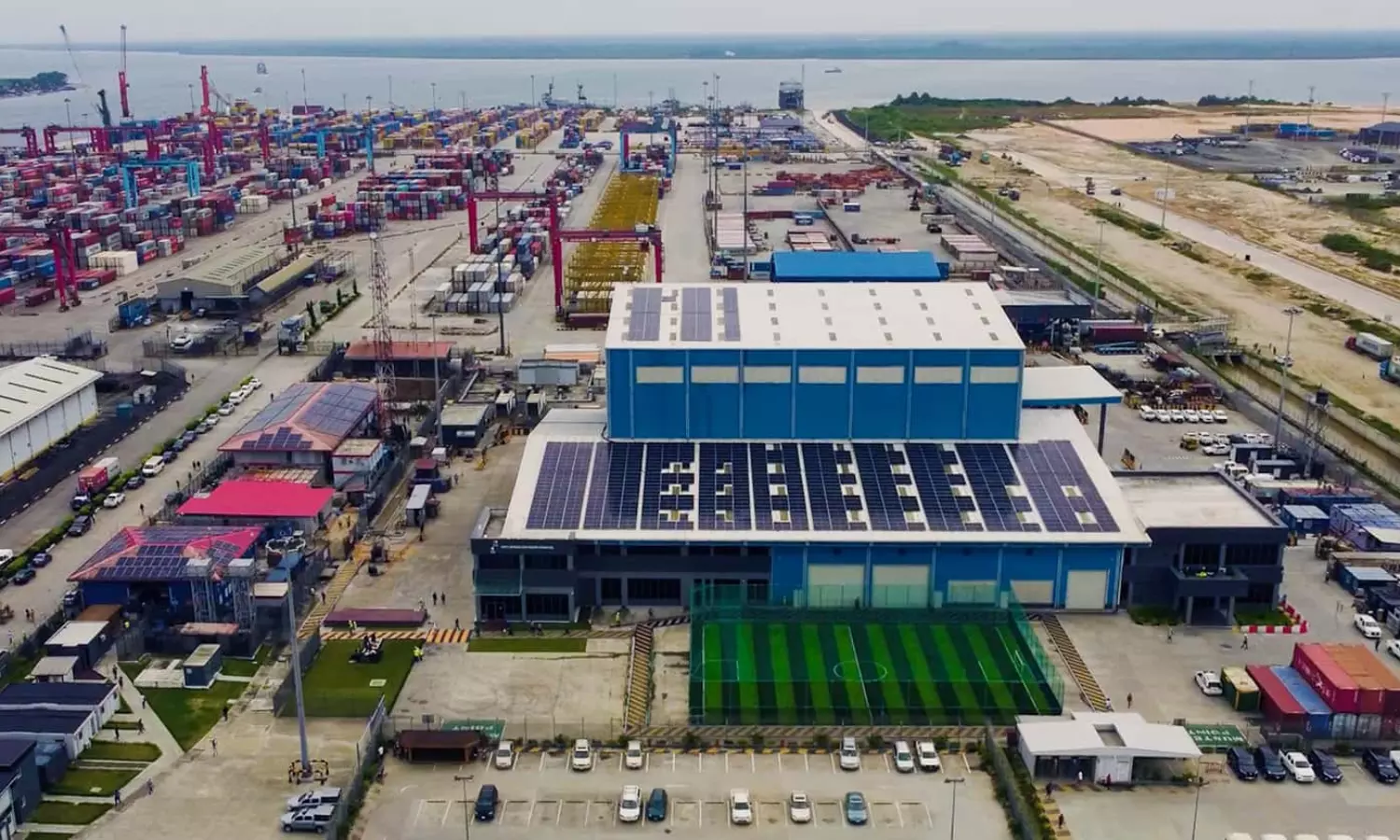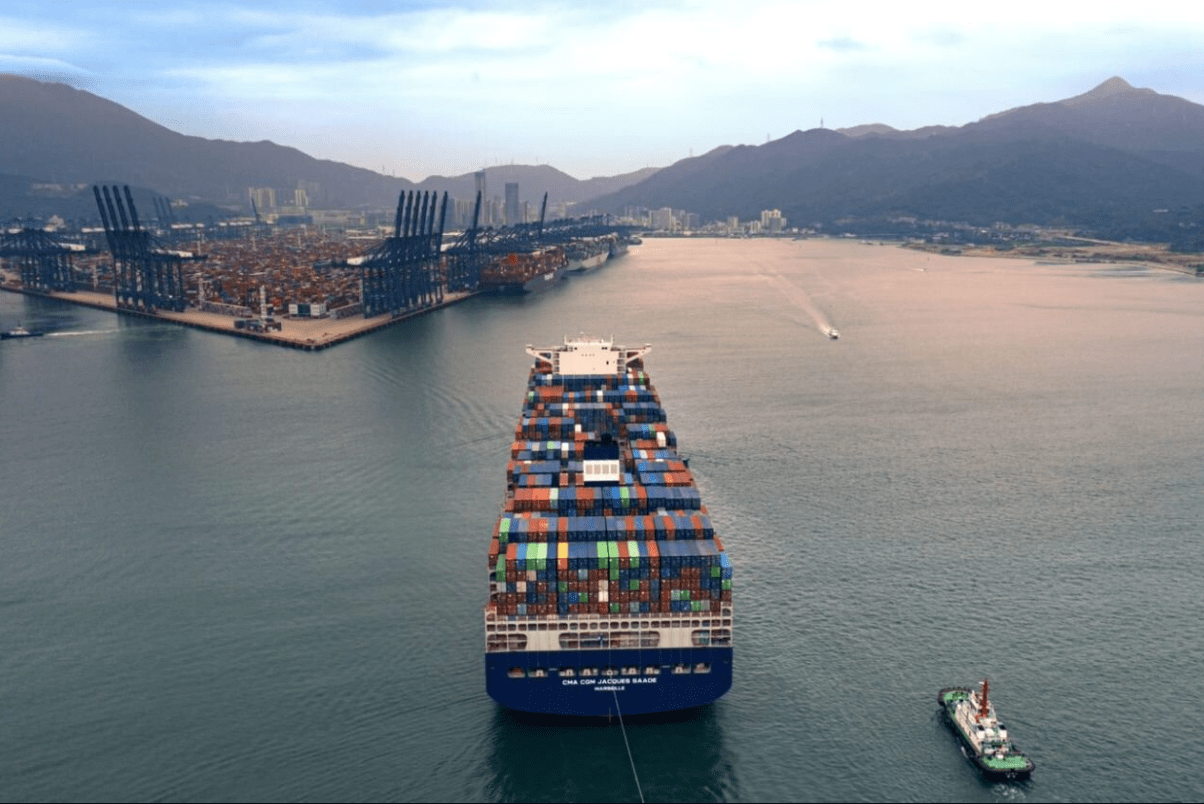Logistic

Qatar: Hamad Port handles 133,112 TEUs container volumes, RORO sees 48% increase in June

Qatar’s main gateway to world trade, Hamad Port enables seamless and secure cargo flow. It unlocks greater growth potential and strengthens the country’s role as a key commercial and logistics hub in the region.
In a post on its X platform, yesterday QTerminals the terminal operating company of Hamad Port stated, Hamad Port handled 133,112 TEUs (twenty-foot equivalent units) containers and received 132 vessels in June this year.
The port witnessed a robust month-on-month growth in handling of RORO (roll on/roll off) vehicle units in June this year.
Hamad Port, the largest eco-friendly project in the region and internationally recognised as one of the largest green ports in the world alone handled 9,871 units of RORO (vehicles) and registered a surge of 48 percent on monthly basis compared to May 2025. Meanwhile the total RORO (vehicles) units stood at 183,200 F/T in June this year witnessing a rise of 41 percent month-on-month basis.
The bulk, break bulk handled in June this year stood at 102,104 F/T (freight tonnes), 22,571 F/T respectively.
Recently, Hamad Port welcomed MSC CHARLESTON, marking the inaugural voyage of the new direct CHINOOK-CLANGA service by Mediterranean Shipping Company (MSC).
This milestone highlights the accelerating growth of maritime trade through the port and strengthens Qatar’s position as a leading regional logistics hub, in alignment with the Ministry of Transport’s strategic plan.
The new service represents a key strategic development, offering direct weekly sailings to major ports in East Asia and the West Coast of North America.
This improves the flexibility and efficiency of supply chains while supporting Qatar’s expanding role in regional and global logistics.
The CHINOOK-CLANGA service links Hamad Port with key international ports including Colombo, Vung Tau, Haiphong, Yantian, Ningbo, Shanghai, Qingdao, Busan, Seattle, Prince Rupert, and Vancouver, providing customers with more diverse and efficient shipping options and strengthening Qatar’s direct connections to some of the world’s most vital trade centers.
This development is part of the ongoing expansion of Hamad Port’s maritime connectivity network, which offers direct and indirect shipping services to over 100 ports worldwide.
This new route not only broadens the port’s international connectivity but also opens new prospects for Qatar’s foreign trade, with positive impacts on the national economy and key sectors.
As one of the region’s most advanced and largest ports, Hamad Port continues strengthening its position as a major logistics and maritime trade hub. With its modern facilities, efficient operations, and high handling capacity, the port is crucial in maintaining resilient and sustainable supply chains.
The Port keeps moving forward firmly towards more powerful position as one of the key ports in the Middle East and the region. It targets achieving a more efficient logistics services industry in Qatar and the transformation into a leading global trade hub, thus enhancing its economic diversification plans in step with the Qatar National Vision 2030.












